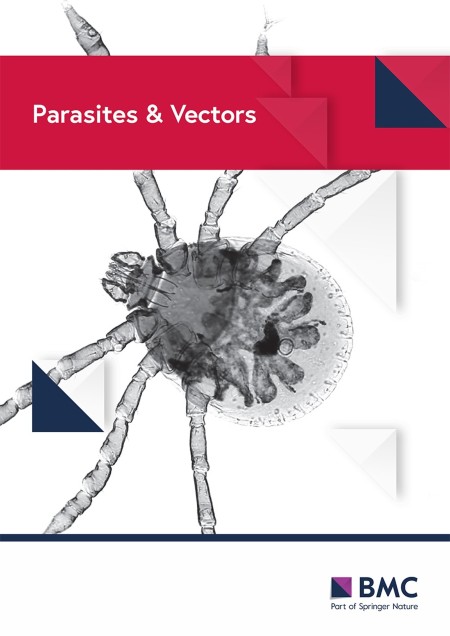New research article in Parasites & Vectors
 A study of the composition of the Obsoletus complex and genetic diversity of Culicoides obsoletus populations in Spain
A study of the composition of the Obsoletus complex and genetic diversity of Culicoides obsoletus populations in Spain
Abstract:
Background: The Culicoides obsoletus species complex (henceforth 'Obsoletus complex') is implicated in the transmission of several arboviruses that can cause severe disease in livestock, such as bluetongue, African horse sickness, epizootic hemorrhagic disease and Schmallenberg disease. Thus, this study aimed to increase our knowledge of the composition and genetic diversity of the Obsoletus complex by partial sequencing of the cytochrome c oxidase I (cox1) gene in poorly studied areas of Spain.
 Methods: A study of C. obsoletus populations was carried out using a single-tube multiplex polymerase chain reaction (PCR) assay that was designed to differentiate the Obsoletus complex sibling species Culicoides obsoletus and Culicoides scoticus, based on the partial amplification of the cox1 gene, as well as cox1 georeferenced sequences from Spain available at GenBank. We sampled 117 insects of the Obsoletus complex from six locations and used a total of 238 sequences of C. obsoletus (ss) individuals (sampled here, and from GenBank) from 14 sites in mainland Spain, the Balearic Islands and the Canary Islands for genetic diversity and phylogenetic analyses.
Methods: A study of C. obsoletus populations was carried out using a single-tube multiplex polymerase chain reaction (PCR) assay that was designed to differentiate the Obsoletus complex sibling species Culicoides obsoletus and Culicoides scoticus, based on the partial amplification of the cox1 gene, as well as cox1 georeferenced sequences from Spain available at GenBank. We sampled 117 insects of the Obsoletus complex from six locations and used a total of 238 sequences of C. obsoletus (ss) individuals (sampled here, and from GenBank) from 14 sites in mainland Spain, the Balearic Islands and the Canary Islands for genetic diversity and phylogenetic analyses.
Results: We identified 90 C. obsoletus (ss), 19 Culicoides scoticus and five Culicoides montanus midges from the six collection sites sampled, and found that the genetic diversity of C. obsoletus (ss) were higher in mainland Spain than in the Canary Islands. The multiplex PCR had limitations in terms of specificity, and no cryptic species within the Obsoletus complex were identified.
Conclusions: Within the Obsoletus complex, C. obsoletus (ss) was the predominant species in the analyzed sites of mainland Spain. Information about the species composition of the Obsoletus complex could be of relevance for future epidemiological studies when specific aspects of the vector competence and capacity of each species have been identified. Our results indicate that the intraspecific divergence is higher in C. obsoletus (ss) northern populations, and demonstrate the isolation of C. obsoletus (ss) populations of the Canary Islands.
Aguilar-Vega C, Rivera B, Lucientes J, Gutiérrez-Boada I and Sánchez-Vizcaíno JM.


